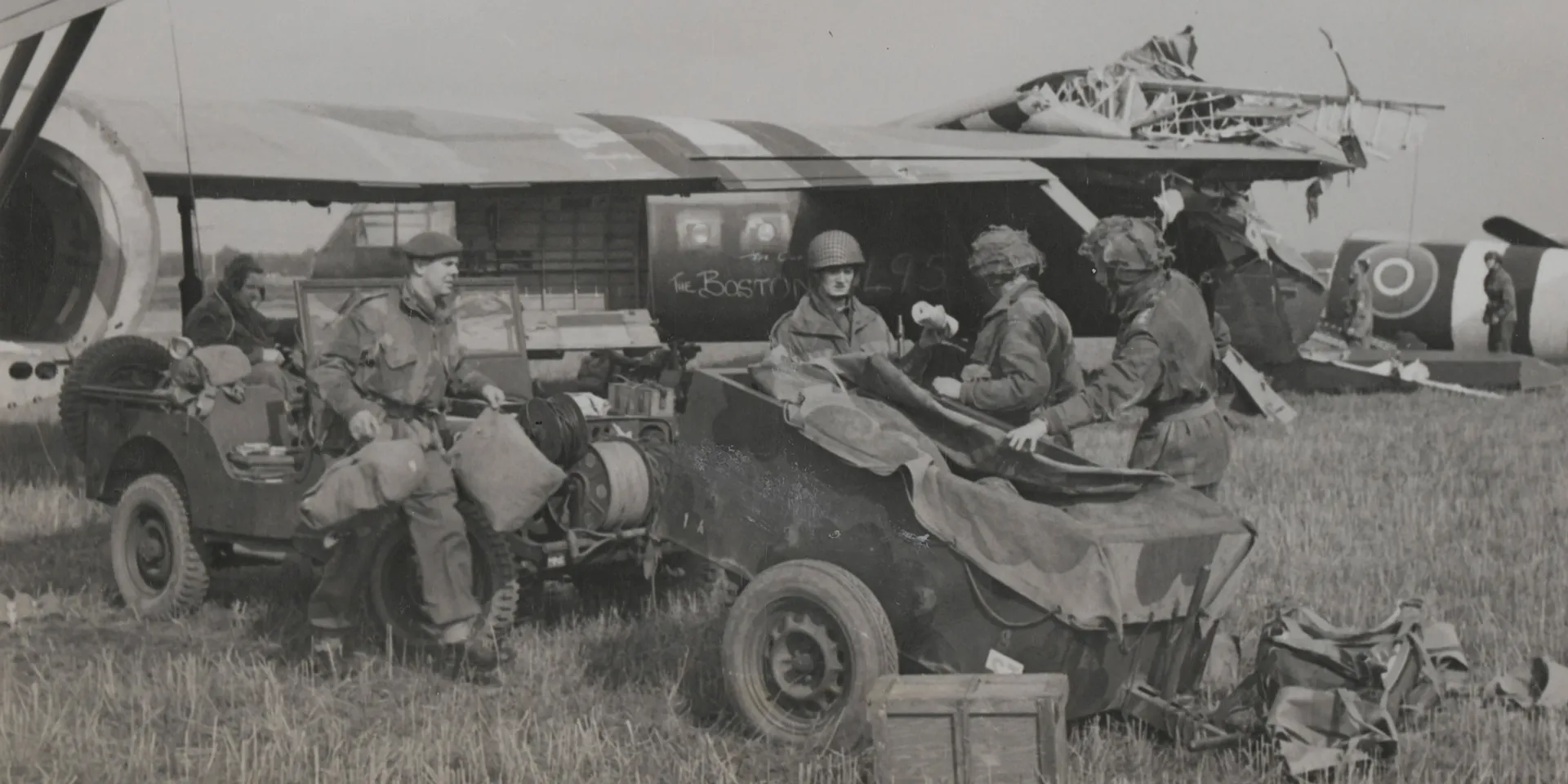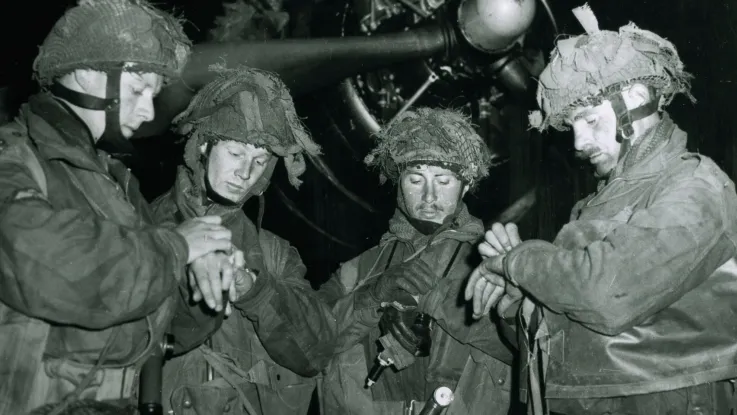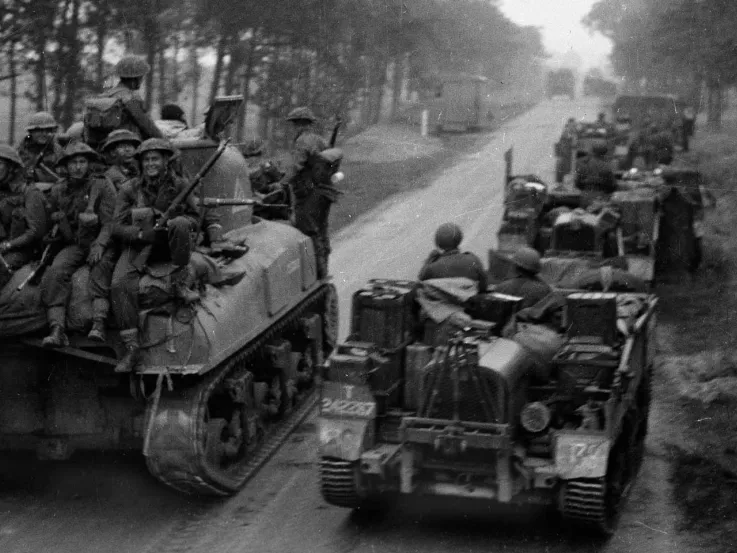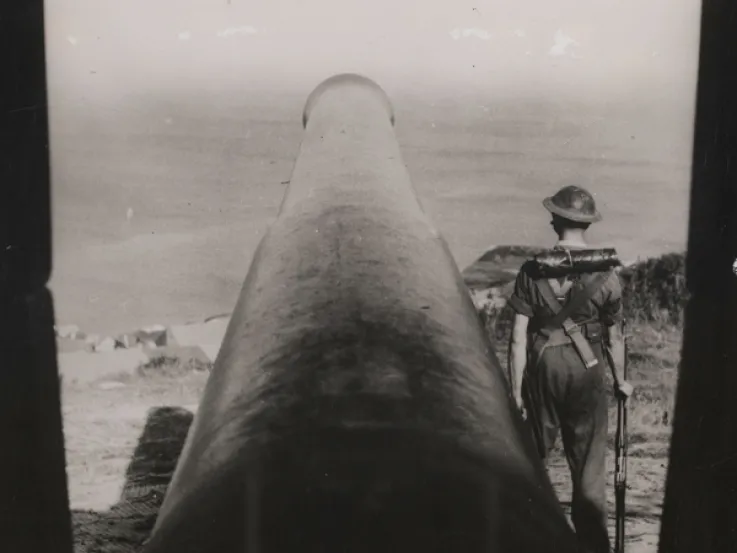The plan
In the summer of 1944, the Allies came up with an ambitious scheme to cross the River Rhine and advance deep into northern Germany and shorten the war.
Codenamed 'Market Garden', this plan involved the seizure of key bridges in the Netherlands by the 101st and 82nd US Airborne Divisions, and 1st British Airborne Division who would land by parachute and glider.

Map of the south-east Netherlands, 1944
Then the British XXX Corps could advance over the bridges and cross the Rhine and its tributaries. The bridges were at Eindhoven, around 20km (13 miles) from the start line, Nijmegen, 85km (53 miles), and Arnhem, 100km (62 miles) away, as well as two smaller bridges at Veghel and Grave that lay between Eindhoven and Nijmegen.
If successful, the plan would liberate the Netherlands, outflank Germany’s formidable frontier defences, the Siegfried Line, and make possible an armoured drive into the Ruhr, Germany’s industrial heartland.
Landings
On 17 September the airborne divisions landed. Eventually all the bridges were captured in what was one of the largest airborne operations in history.
The plan failed largely because of XXX Corps’s inability to reach the furthest bridge at Arnhem before German forces overwhelmed the British defenders. Allied intelligence had failed to detect the presence of German tanks, including elements of two SS Panzer divisions.
Arnhem
Around 10,000 men from Major-General Roy Urquhart’s 1st British Airborne Division and the 1st Polish Independent Parachute Brigade landed at Arnhem. But their landing zones were 11km (7 miles) from the bridge at Arnhem. Only one battalion reached the objective while the remaining soldiers were squeezed into a pocket at Oosterbeek to the west.
Apart from a few anti-tank guns and howitzers, modified to fit inside gliders, the lightly armed airborne troops had few heavy weapons with which to resist tanks.
‘We have had a very heavy shelling this morning, September 23rd and now the situation is serious. The shelling is hellish. We have been holding out for a week now. The men are tired, weary and food is becoming scarce, and to make matters worse, we are having heavy rain. If we are not relieved soon, then the men will just drop from sheer exhaustion.’Sergeant Dennis Smith, Army Film and Photographic Unit — 23 September 1944
XXX Corps
Although units of XXX Corps captured Nijmegen bridge in conjunction with the US 82nd Airborne Division, they could not reach the furthest bridge at Arnhem. Much of its advance was along a single narrow causeway, which was vulnerable to traffic jams and German counter-attacks.
In some places the advance was hindered by marshes that prevented off-road movement. Throughout the battle the Germans also showed a remarkable ability to put together scratch battle groups that fought to delay the armoured columns.
Problems
Operations were also hampered by a shortage of transport aircraft. The airborne troops were flown into the Netherlands in three lifts rather than all together.
Arnhem’s wooded landscape severely restricted the range of wireless sets, so communication failures also reduced the chance of success. Thick fog in England and low clouds over the battle zone hampered both resupply and the air-lifting of reinforcements.
Evacuation
On 24-25 September about 2,100 troops from 1st Airborne Division were ferried back across the Rhine. Another 7,500 were either dead or made prisoners of war.
The crossing of the Rhine and the capture of Germany's industrial heartland were delayed for six months. Now, the Allies would have to fight their way into the Reich on a broad front. There would be no quick victory.
‘If in the years to come, you meet a man who says, “I was at Arnhem,” raise your hat and buy him a drink.’War correspondent Alan Wood — 1944
Failure
A costly failure, Operation Market Garden remains a remarkable feat of arms. This is not because of its strategic ambition, but because of the determination and courage shown by Allied airborne troops and the units that tried to reach them.
It also led to the liberation of a large part of the Netherlands at a time when many Dutch people were close to starvation.



















